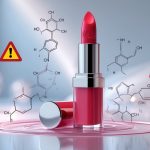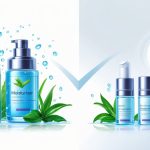Dermatologist-Backed Ingredients Suddenly Reshaping Daily Routines
I swear, half my bathroom shelf is just graveyard serums I bought after some “expert” on TikTok yelled about peptides or niacinamide. Now my dermatologist’s tossing out those same ingredient names like they’ve just been discovered, except—okay, there’s apparently data this time? Like, real numbers, not just vibes. Nobody ever told me “82% improvement in skin laxity” was even a thing, so I find out by accident, wedged between “drink more water” and some peer-reviewed stats that, let’s be honest, most people scroll past until their face starts drooping. So yeah, dermatologist-backed stuff—niacinamide, retinoids, SPF—suddenly feels less like marketing and more like, ugh, actual science. Even if I’m not ready for it.
SPF 30 is “enough,” says my dermatologist. Is it though? I forget to reapply; it ends up on my shirt, not my face. Retinoids? Supposedly essential for acne and aging. I get it, but try explaining why your face is peeling off in a public restroom. It’s awkward. Still, these actives are everywhere, and apparently the CTM routine is dead because everything’s crawling with peptides now.
Jump to 2025, and there’s a “minimalist” bottle promising miracles. I’m convinced someone on Instagram is using the same stuff for cellulite. Dermatologists keep correcting me—“science, not influencers”—but who even asked for a “triangle of youth”? What is that? Why is my face a geometry lesson?
Dermatologist-Backed Ingredients Transforming Skincare

After I dumped a bunch of expired serums (some smelled like glue), every bottle I see now screams “niacinamide” or “peptides” or something else I’m supposed to care about. It’s like brands can’t shut up about dermatologist approval. Usually, the hype is way ahead of the science, but now? I’m actually reading ingredient lists. Can’t decide if I’m proud or just tired.
What Makes an Ingredient Dermatologist-Approved
I get bombarded with “dermatologist tested” and “clinically proven” so much I tune it out. But UK dermatologist Dr. Anjali Mahto says only stuff with real, repeated clinical research gets her approval. Not some random “study” from a brand.
Retinoids, vitamin C (the actual acid, not the knockoffs), and broad-spectrum sunscreen keep topping those best-seller lists for a reason. I skipped retinol for months, thought moisturizer would save me. Nope. Fine lines showed up anyway. Back to basics—retinol, sunscreen, nothing fancy, and yeah, it worked.
It’s the multitaskers—niacinamide for tone, ceramides for barrier, antioxidants for… everything—that stick around. Not because brands want them, but because dermatologists keep shoving studies in my face. TikTok can’t compete with actual journals.
The Science Behind Ingredient Selection
My dermatologist is obsessed with details. She’ll grill me about concentrations—why 0.5% retinol isn’t 2%, why vitamin C dies in sunlight, why bakuchiol might be a scam. She wants clinical trials, not just “tested by influencers.” If there’s no double-blind study, she rolls her eyes.
Peptides? I’m not convinced. Some new brands claim their peptides “reshape” your skin. Unless there’s real, published research, I’m not buying it. FDA doesn’t even approve cosmetic claims, so “clinically tested” means nothing without context.
When I ask for recommendations, my dermatologist hands me a list, sometimes even printouts (is this 2003?). No magic, just stable formulas and boring, repeatable results. Viral trends? She doesn’t care.
Emerging Research and Findings
Now exosomes and plant cell cultures are everywhere. I barely figured out what “holy grail actives” were, and now I’m supposed to care about microscopic cell messengers? Exosome-based treatments are apparently a big deal for skin repair. In-office stuff is stronger, but some over-the-counter versions might help with post-inflammatory issues. Maybe. I don’t know if they’ll stick around.
Niacinamide and ceramides used to be “nice-to-have,” now they’re essentials—especially for hyperpigmentation and weak skin barriers. Harvard Health claims niacinamide beats out old-school brighteners, and it’s cheap, so now it’s in everything. Toners, sunscreens, whatever.
I once dumped half a serum on my hand rushing out the door (don’t do this). Dermatologists keep saying: stick to proven, multi-tasking ingredients. Fads come and go, but the stuff that survives has decades of boring, practical research. Not just pretty bottles.
Building a Modern Skincare Routine
I still forget toner half the time. Meanwhile, everyone’s debating peptide serums and whether you need a single or double cleanse. Ten steps? Who has that kind of energy? Dermatologists just mutter, “science-backed, keep it simple,” while my skin does whatever it wants.
Daily Essentials for Every Skin Type
Biggest myth? Oily skin needs to be dried out. It doesn’t—if you do, it just gets oilier. I watched a dermatologist get heckled at a conference for saying toner isn’t necessary. Her answer: “Cleanser, moisturizer, SPF. That’s it. The rest is just a hobby.”
Everyone hoards the same stuff, whether you’re dry, oily, or somewhere in between. The basics: gentle cleanser, hydrating-but-not-greasy moisturizer, and always broad-spectrum sunscreen. I don’t trust anything under SPF 30, even if experts say it’s fine—probably because nobody reapplies after lunch.
Double cleansing? Only if you wore a ton of makeup or sunscreen. Most days it just wrecks my combination skin. People keep saying alternate gel and cream cleansers. I don’t know, seems like a lot of steps unless I’ve been sweating under a mask all day.
The Role of Morning and Nighttime Routines
My mornings are a joke—cleanse, SPF, done. Dermatologists talk about antioxidants and vitamin C and “environmental stressors,” but if I get sunscreen on before I leave, I’m calling it a win.
Nights get complicated. Cleanser (again), retinoid if I can be bothered, light moisturizer because heavy ones break me out. Nobody admits this, but your skin doesn’t want twenty products. Dermatologists keep saying: less is more, swap actives with the season, don’t panic-buy every new thing.
Customizing Steps for Unique Needs
Every time I try to personalize my routine, I end up with a bunch of half-used acids. “Patch test,” they say—I never do, then complain when my face burns. There are a million routines online, but honestly, one appointment with a dermatologist beats any algorithm. “Listen to your skin, not the bottle,” she says.
I use azelaic acid for redness (sometimes), even though everyone else loves niacinamide. What works for one person turns another into a tomato. Humid summer? Gel SPF, nothing oily, no matter what the “dewy finish” promises.
If you want to skip the guessing, check modern dermatologist guides or those weirdly detailed Vogue lists. The rest is just ingredients, patience, and ignoring TikTok mobs.



